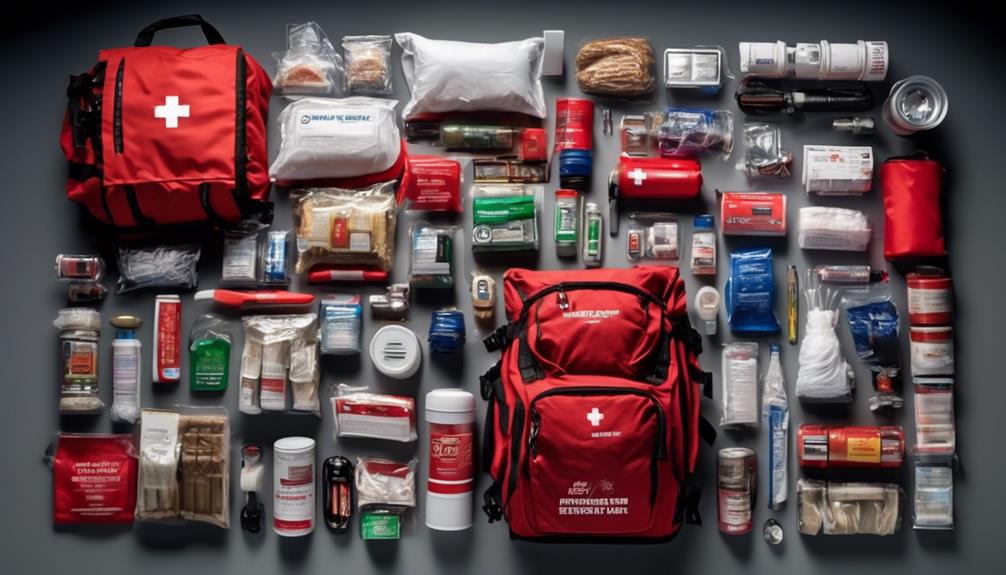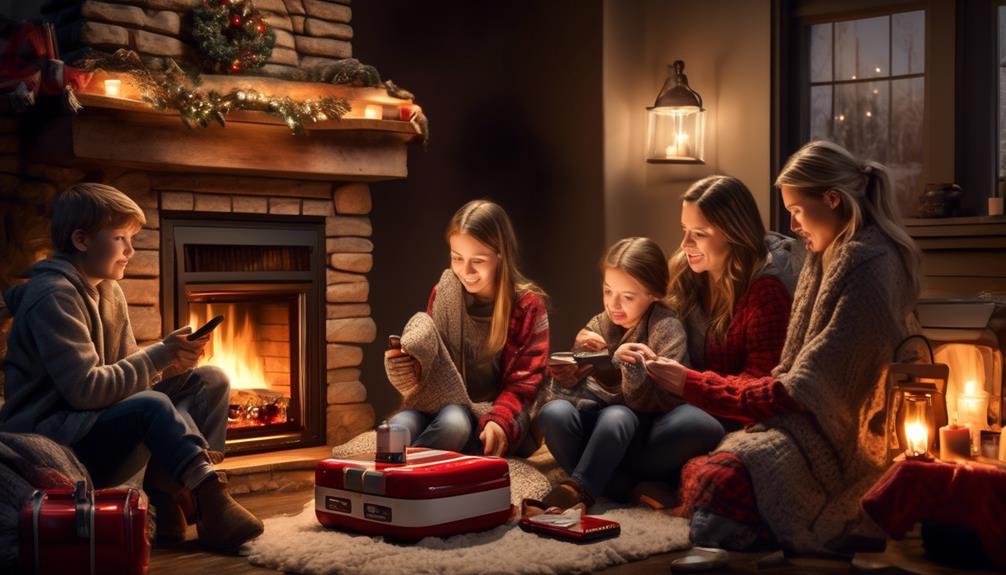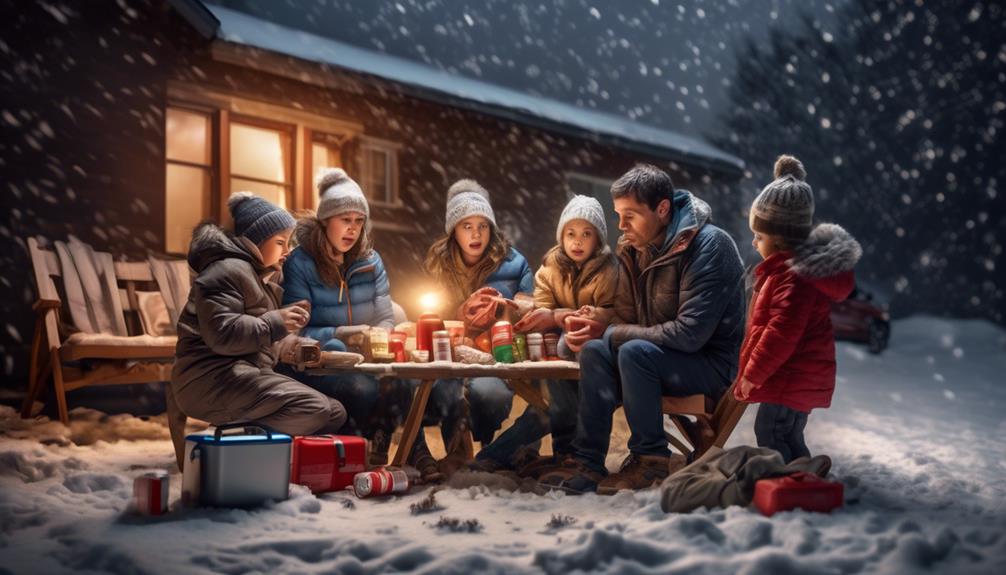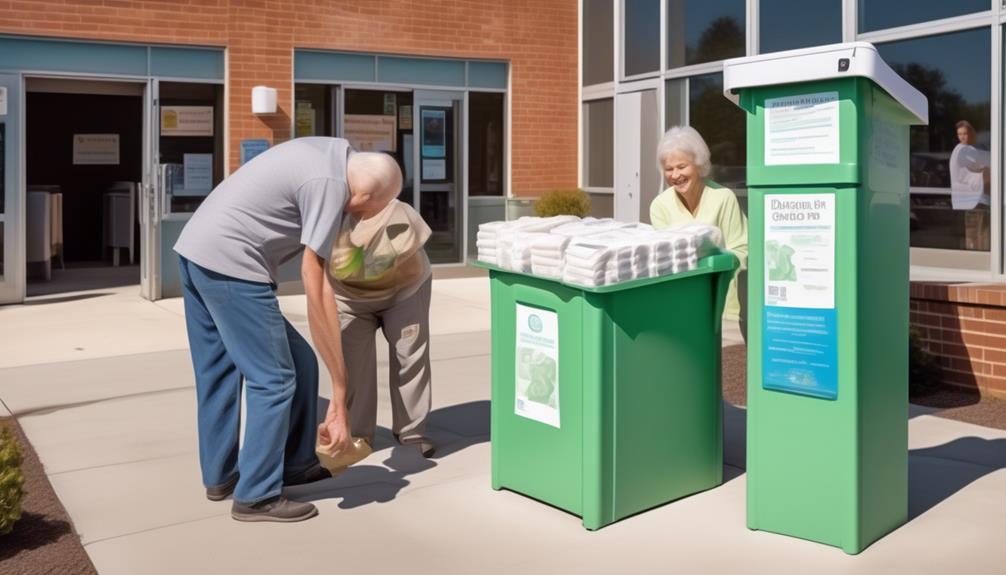Winter comes with a strong force, bringing icy temperatures that can catch people off guard. Unexpected power outages and dangerous road conditions are just a couple of the challenges. Being prepared is essential to keeping yourself and your loved ones safe.
But have you ever considered the intricacies of creating a comprehensive winter storm safety checklist? Let's explore the essential steps and precautions to take before, during, and after a winter storm to safeguard against unforeseen emergencies and ensure peace of mind.
Key Takeaways
- Insulate homes and seal drafts for heat retention.
- Stock emergency supplies like flashlights, batteries, and blankets.
- Create an emergency communication plan with family meeting place.
- Exercise caution with space heaters, fireplaces, and generators for safety.
Pre-Storm Preparations
Before the impending winter storm, it's crucial to undertake essential pre-storm preparations to ensure safety and readiness. Winter weather can bring about significant challenges, especially when it comes to keeping our homes warm and secure.
It's essential to insulate our homes properly and seal any drafts to retain heat during the storm. Additionally, having a backup heating source such as a generator or fireplace can be vital in case of power outages. Gas-powered generators should always be used outside to prevent carbon monoxide poisoning.
Staying informed about the storm's progress through the Emergency Alert System (EAS) and following the instructions of local authorities is paramount for our safety. By preparing our homes and ensuring we've enough supplies and energy sources, we can better weather the storm and keep ourselves and our loved ones safe.
Essential Supplies and Equipment

Prepare a comprehensive supply kit including non-perishable food, water, medications, and emergency equipment to ensure readiness for a winter storm. When assembling your supplies, consider the following essential items:
- Flashlights and Batteries: Ensure you have multiple flashlights and extra batteries to provide reliable lighting during power outages in the winter storm.
- First Aid Kit: A well-stocked first aid kit is vital for addressing any injuries or medical needs that may arise during a winter storm emergency.
- Extra Blankets: Have additional blankets on hand to stay warm in case of heating system failure or prolonged power outages.
In addition to the above items, remember to include a portable phone charger, hygiene items like hand sanitizer, moist towelettes, and personal hygiene products, as well as important documents such as identification, insurance information, and emergency contact numbers in your emergency kit.
Being prepared with these supplies and equipment can make a significant difference in your safety and well-being during a winter storm.
Emergency Communication Plan
As we ensure our supply kit is well-equipped for the upcoming winter storm, establishing a robust emergency communication plan is equally crucial for our safety and coordination amidst potential challenges. An effective communication plan involves creating a list of emergency contacts that includes family, friends, and local authorities. Additionally, designating a meeting place for family members in case of separation during a winter storm ensures everyone knows where to gather for safety. Utilizing phone trees or messaging apps can help disseminate important updates and safety information efficiently among all members involved. It's important to ensure that all family members know how to access emergency alerts and warnings through various channels to stay informed. Regular drills and practice scenarios are essential to test the effectiveness of the communication plan and ensure readiness during emergencies. By implementing these strategies, we can enhance our preparedness and response capabilities for any unforeseen events.
| Key Aspect | Description |
|---|---|
| Emergency Contacts | List of family, friends, and local authorities for communication. |
| Meeting Place | Designated location for family members to gather in case of separation. |
| Phone Trees/Messaging Apps | Tools used to communicate important updates and safety information. |
Safety Protocols During the Storm

Ensuring our safety during a winter storm necessitates adhering to essential safety protocols to mitigate risks and maintain well-being. Here are key safety protocols to follow during a winter storm:
- Stay indoors: Winter Storm Warnings often accompany extreme cold, posing significant risks like frostbite and hypothermia. To stay safe, it's crucial to remain indoors until the storm passes.
- Keep emergency supplies: Have emergency supplies such as food, water, and medications easily accessible. These provisions are vital for sustaining yourself throughout the storm when going outside isn't an option.
- Avoid fire hazards: Exercise caution with space heaters and fireplaces to prevent fire hazards. Ensure proper ventilation to reduce the risk of carbon monoxide poisoning.
Monitoring local weather updates and emergency alerts will provide critical information to help you navigate the storm safely. By having a communication plan in place, you can stay connected with your loved ones and emergency services, ensuring everyone's well-being.
Post-Storm Recovery and Safety
After enduring the winter storm, it is crucial to prioritize safety and recovery measures to navigate potential hazards effectively. When dealing with post-storm recovery, it's essential to be aware of electrical hazards from damaged power lines, watch out for falling branches, and be cautious of ice buildup on structures to prevent injuries. Additionally, to avoid overexertion and potential heart attacks, remember to take frequent breaks while shoveling snow. Seek shelter in public spaces if necessary to stay safe and warm during the recovery process. Don't overlook the importance of emotional well-being; managing stress and anxiety is vital after a winter storm to ensure a full recovery. Below is a table summarizing key points to consider during the post-storm phase:
| Post-Storm Recovery Tips |
|---|
| Watch out for electrical hazards |
| Be cautious of falling branches |
| Prevent overexertion and heart attacks |
| Seek shelter in public spaces if needed |
| Take care of emotional well-being |
Frequently Asked Questions
What Should Be in an Emergency Kit for a Winter Storm?
In our emergency kit for a winter storm, we include non-perishable food, water, and essential medications to last at least 3 days. It's crucial to pack items like flashlights, batteries, a first aid kit, blankets, and a portable phone charger.
Additionally, we add a battery-powered or hand-crank radio, extra clothing, and personal hygiene products. Having a whistle, a multipurpose tool, cash, important documents, and a map of our area is essential.
Customizing the kit based on family needs, including infants, elderly family members, or pets, is vital.
What Are Some Safety Tips for Before a Winter Storm?
Before a winter storm, we should take several precautions to ensure safety and preparedness.
We should insulate our homes to retain warmth, prevent pipe freezing by insulating and dripping faucets, and ensure smoke alarms and carbon monoxide detectors are functioning.
It's essential to stock up on supplies like food, water, medications, and batteries for power outages.
Keeping a full tank of gas in our vehicles and having a winter emergency kit ready can help us stay safe during emergencies.
What Is the Weather Preparedness Checklist?
Sure thing!
The weather preparedness checklist is a vital tool for ensuring safety and readiness during winter storms. It covers essentials like food, water, medications, and emergency supplies. By following this checklist, families can stay secure and resilient in the face of extreme cold and hazardous conditions.
It's a crucial resource for preparing for power outages and reducing risks associated with severe winter weather events.
How Do You Prepare Your Home for a Winter Storm?
We prepare our home for a winter storm by insulating it with caulking and weather stripping to keep the cold out. We also prevent pipe freezing by insulating water lines along exterior walls.
Furthermore, we ensure the safety of our household by installing and testing smoke alarms and carbon monoxide detectors.
Stocking up on supplies like food, water, and medicine for extended power outages, as well as maintaining a full tank of gas in our car for emergencies, are crucial steps in our preparedness efforts.
Conclusion
As we huddle together, surrounded by flickering candlelight and the howling wind outside, we find comfort in knowing we're prepared. Our emergency supplies are at the ready, our communication plan in place.
The storm may rage on, but we stand strong, united in our readiness. With each passing moment, we navigate the challenges with resilience and determination.
Winter storms may test us, but we're prepared to weather any storm that comes our way.









